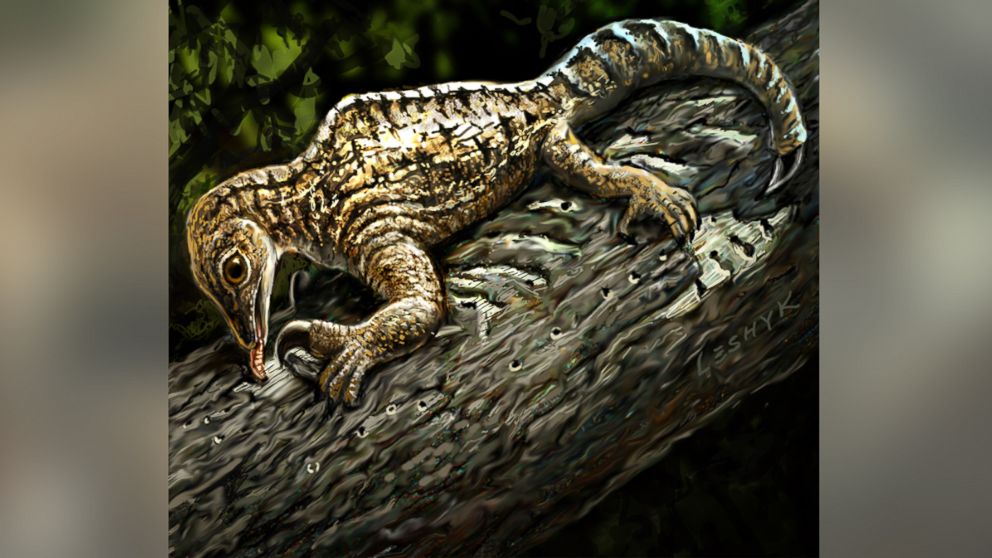Reptile With 'Bizarre' Front Limbs Tweaks Current Understanding of Evolution
The extinct reptile is described as a "chameleon-anteater hybrid."

— -- A new study on 212-million-year-old fossils from an extinct reptile with strange arms has shed new light on our understanding of evolution.
A team of scientists analyzed the fossils of a drepanosaurus, a prehistoric reptile that has been described as a "chameleon-anteater hybrid," and found that the bone structure, especially in the front limbs, were unlike any other animals from that time period.
“This animal stretches the bounds of what we think can evolve in the limbs of four-footed animals,” Adam Pritchard, the lead author on the paper and a postdoctoral researcher at Yale University, said in a statement.
Pritchard, Alan Turner of Stony Brook University, Randall Irmis of the University of Utah, Sterling Nesbitt of Virginia Polytechnic Institute and State University, and Nathan Smith of the Dinosaur Institute at the Natural History Museum of Los Angeles co-authored the report and published their findings on Thursday in the journal Current Biology.
The fossils indicated that the animal's two arm bones, the radius and ulna, are different sizes, unlike most tetrapods (a general term for four-limbed animals).
“Ecologically, Drepanosaurus seems to be a sort of chameleon-anteater hybrid, which is really bizarre for the time. It possesses a totally unique forelimb,” Pritchard added.
The team of scientists also wrote that these unusual front arms are significant because the "structural relationships between the bones of the forelimb have remained largely unchanged throughout the 375 million year history of Tetrapoda."
The drepanosaurus also has an unusually long claw on one of its fingers.
The presence of a claw is also unique, according to the paper, because it "demonstrates that specialized, modern ecological roles had developed during the Triassic Period, over 200 million years ago."
The drepanosaurus fossils were discovered in Ghost Ranch, New Mexico, according to the report.




